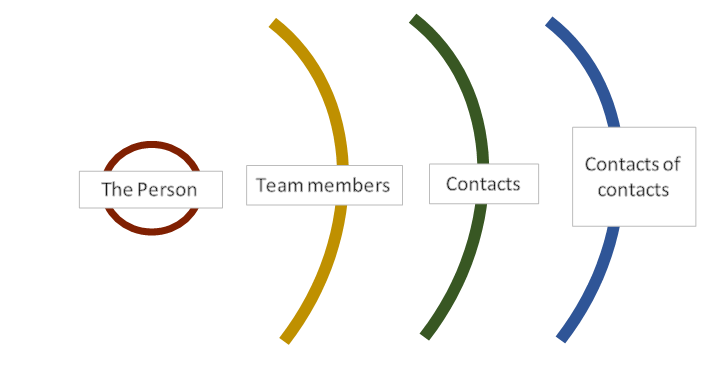3 Degrees of Protection Against Coronavirus
A note to those we care for, their care partners and their families.

Today the care team is more than ever a special relationship. The “team” includes our front-line caregivers, our clients, their families, their care partners, our client services, community partner organisations and public health.
While the peak of the coronavirus may hopefully be sooner rather than later, the impact of the virus on health and social care provision will stay with us for a long while yet. We must assume that the virus will continue to be active within our communities, even if at a lower level and so we must be prepared.
The official recommendation to prevent transmission of the Coronavirus is to social distance when performing essential errands, and to self-isolate at all other times. Many are able to do this, but many are not. Those that cannot include those who use health and social supports in the home and the community, and those that provide those supports
We need to develop safe ways of working through this, ways that also respect the concerns of all who come together in the care teams: the person, the family and private caregiver, the wider health and social teams. How do we manage these interactions in a COVID-19 world?
Step 1 – Stop the virus before it gets to the care team
A virus is spread primarily by close contacts. Unfortunately, by the time someone we are closely connected with has symptoms, it may be too late to prevent them from passing the virus on. This is one reason why our long-term care homes are struggling.
We need to be able to “see” the virus long before it gets to us. How do we do this?
Let us assume that The Person is who we are looking after. The other Team members are represented by the dark yellow line. If any of the care “team members” have the virus there is a risk that “the person” will contract it too.
We are most likely to get a virus from our “close contacts”. We can reduce this risk by limiting our contacts. But those in care teams might find this especially difficult for a number of reasons.
The research suggests that people can become infectious two days before they show symptoms. If we have been in close contact with someone who has flu or cold like symptoms in the days leading up to infection, we need to isolate ourselves immediately from the care team, irrespective of whether we are showing symptoms. Getting this information early will prevent a virus getting to the “the person”.
However, we would rather not have to self-isolate a member of the care team, if at all possible. If our close contacts are able to keep a tab on their close contacts, the contacts of the contacts, then we have added protection. If we see the virus at the blue line, we are better able to shut it down before it gets to the yellow and red.
Keeping two or three steps ahead of the Coronavirus is what we aim to achieve. Every member of the team has a role in this.
Step 2 – Social distancing and face coverings
Practise safe social distancing, avoid social gatherings and crowds. Be extra careful when engaging with people outside the care team, especially those you do not know.
According to information presented by the Financial Times and MIT, droplets can travel 1.5 metres via normal breathing, 2 metres via a cough and 8 metres by a sneeze. Keep at least 2 metres (six feet) away from people at all times is the general guidance. However, new guidance from the US Centres For Disease Control and Prevention (CDC) recommends that people also wear facial coverings in public in areas.
Within the home, the care team may also choose to keep social distancing rules when not interacting closely with the person. The team may also choose to wear facial coverings to minimise the risks of transmission. Our staff are however required to wear face masks when interacting with our clients and their families, to further minimise the risks of viral transmission.
Step 3 – Wash your hands, produce and goods brought in from outside and areas you have touched
Our caregivers have rigorous hand washing protocols. These are noted on our website and are discussed in our Jane’s GTA Café blog, “Social Distancing is not enough…” We encourage all members of the care team to wash their hands as soon as they come into the home, before and after they interact with each other, especially with respect to food preparation and help with bathing and toileting and grooming. Please also take the time to clean the home environment, especially those areas you have touched.
Three levels of protection
Know your contacts, keep your social distance, consider wearing face coverings in public and practise good hygiene. These simple but time-consuming procedures cannot guarantee that the risks of contracting COVID-19 will be eliminated, but they represent three important layers of protection for everyone within the wider team.